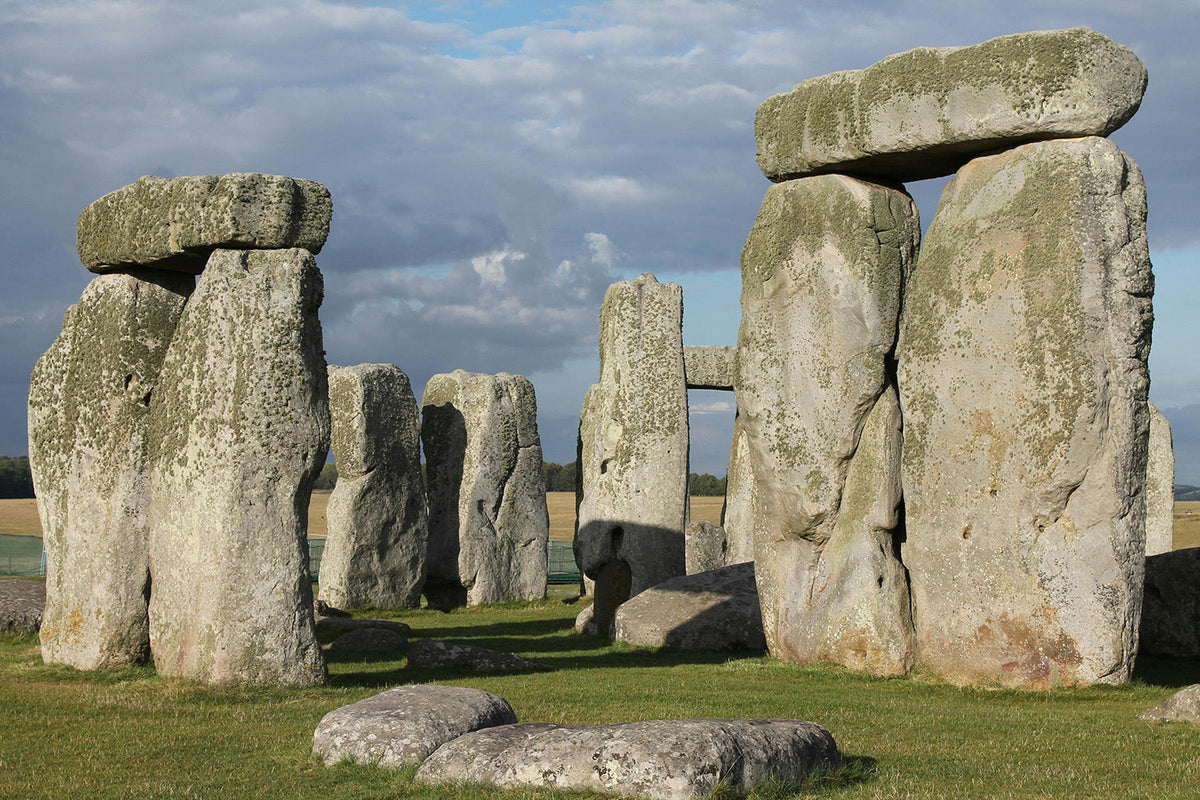- Regular Price
- £19.99
- Sale Price
- £19.99
- Regular Price
- £19.99
- Unit Price
- per

“Our heritage and ideals, our code and standards - the things we live by and teach our children - are preserved or diminished by how freely we exchange ideas and feelings." Walt Disney
Here at T
he Wool Company, we’ve always recognised the importance of preserving the environment. It’s partly why we relentlessly champion the wonderous natural fibre (wool also has some astounding properties) and why we always try to source ethically and sustainably. It’s also why we support World Heritage Day, a global celebration of World Heritage sites and the importance of their preservation for future generations.
Celebrating Our Heritage
So, what is a World Heritage site?
World Heritage sites are places from all around the world that are considered by the United Nations Educational, Scientific and Cultural Organisation (UNESCO for short) to be extremely important for the shared understanding and future of our planet. There are more than 1,100 sites globally, some are natural like the Great Barrier Reef or the Serengeti, and many are man-made marvels like Machu Pichu or the Taj Mahal. Whilst these sites have been identified by UNESCO, they are all looked after by their local communities.
There are 33 recognised World Heritage sites across the UK. These sites are as diverse as they are remarkable: Ancient monuments like the Heart of Neolithic Orkney and Stonehenge, the natural wonders of the Jurassic Coast and Giant’s Causeway, and even entire cities like Bath and Edinburgh.
In the spirit of all things world heritage (namely bringing awareness), I’ve spot-lit some of my favourite sites across the country:
Cornish Mining
Of course, I had to start with Cornwall… Not even the undulating moors and tranquil fields of Devon and Cornwall could escape the Industrial Revolution. During the 18th and early 19th centuries, they underwent significant changes due to the rapid expansion of pioneering copper and tin mining, making many parts of the counties unrecognisable. Given the scale, the heritage site actually consists of ten unique areas spanning from west Cornwall to west Devon.
The remains of mines, engine houses, smallholdings, ports, harbours, canals, railways, tramroads, and industries allied to mining, along with new towns and villages reflect an extended period of industrial expansion and prolific innovation. Cornish mining was crucial to the rapid industrialisation not only in the UK but worldwide - by the early 19th century, the region accounted for two-thirds of global copper production!

The engine house (above) is now an iconic symbol of Cornish mining and was a crucial part of keeping up with increased demand in the 18th century. These well-preserved are a lasting reminder of the profound impact of Cornwall and West Devon on British industrialisation and the worldwide mining sector.
Heart of Neolithic Orkney
Travelling slightly further North to the Orkney Islands, off the northeast coast of Scotland, lies a group of Neolithic monuments that date back over 5,000 years. Despite being 800 miles apart, the standing stones remind me of the Neolithic structures at Bodmin Moor.
Among these sites are Skara Brae, arguably the most well-preserved Neolithic village in Western Europe. Many structures remain in remarkable condition and reveal insights into ancient daily life. Archaeological excavations have found gaming dice, tools, pottery, and jewellery, suggesting that the villagers lived as simple farmers and fishermen.

The Ring of Brodgar and the Standing Stones of Stenness are more archaeological treasures located on the site - two giants stone circles that were possibly once a religious shrine and a place of ritual. Others believe the ring was built for the astronomical observation of the equinox and solstice. Nobody really knows the real answer – but it does add to the mystique.

These monuments offer a glimpse into Neolithic society, showcasing architectural prowess, religious beliefs, and cultural practices. Their enduring presence on the landscape speaks to the ingenuity and significance of prehistoric communities in Scotland. Through their preservation, the Heart of Neolithic Orkney provides a unique opportunity for visitors to connect with the distant past and appreciate the rich heritage of the Orkney Islands.
Giant’s Causeway
Many years ago, a giant called Finn MacCool created a raised road made of basalt so he could cross the Irish Sea and reach Scotland to fight his rival, the Scottish giant Benandonner. After realising how much larger his foe was, Finn fled back home along the causeway with Benandonner in pursuit. The story then gets stranger still – Finn dressed up as a giant baby to terrify Benandonner into retreating home, ripping up the causeway as he left. According to Irish legend, this is how Giant’s Causeway came into existence.

The Giant’s Causeway is situated at the base of the basalt cliffs along the coastal line bordering the Antrim plateau in Northern Ireland. Comprising around 40,000 interlocking black basalt columns protruding from the sea. Unfortunately, these incredible rocks weren’t created by two squabbling giants, but by volcanic eruptions during the Tertiary period around 60 million years ago. There is nothing quite like it in the world, hence its WHS status and the thousands of visitors the site attracts every year. Believe it or not, Giant’s Causeway has been a tourist attraction since the 18th century!
Barely Scratching the Surface…
There are still over 1100 World Heritage sites across the planet. They are incredible wonders that stimulate tourism, support local communities, and promoting education and research. Beyond that, these sites are a testament to human heritage and the planet's natural wonders – the least we can do is protect them for future generations.
Closing Thought?
As Walt Disney so eloquently reminded us, our future hinges on the preservation of our past. Through education and engagement, let’s continue to cherish and uphold the wonders of our world.
Photo Credits:
0 comments